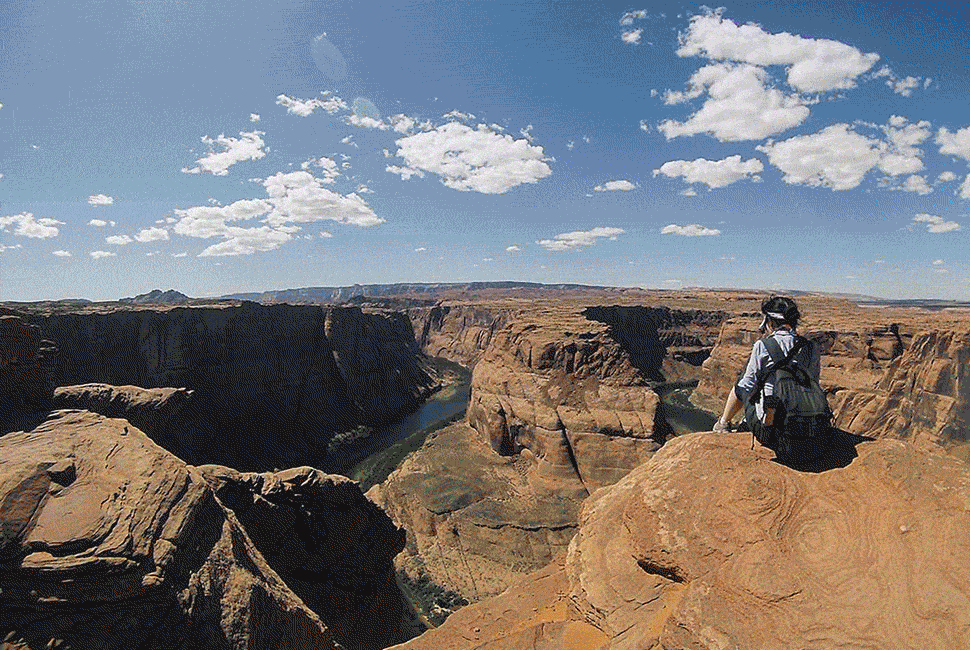To post, or not to post? Social media has emerged as the double-edged sword of the adventure travel space. On one hand, travelers and influencers posting relevant content about a still-off-the-radar destination or mom-‘n’-pop outfitter is every marketer’s dream. On the flip side, disconnecting from our daily lives and reconnecting with nature has always been one of the most powerful outcomes of any adventure experience. Henry David Thoreau said, “We need the tonic of wildness…At the same time that we are earnest to explore and learn all things, we require that all things be mysterious and unexplorable, that land and sea be indefinitely wild.” But does the tonic still have the same effect when we aren’t truly in the moment? Is it still as powerful when we’re taking in nature from behind our phones or via social media posts?
People once booked trips based on the weather, the culture, the airfare, the food. But as an article from Outside points out, today’s travelers factor in the photos they can post just as much as, if not more than, the experience they’ll have. As well as bragging rights, selfies and Snapchats have become the “word of mouth” of the old days, acting as a catalyst to get people thinking: “Hey, maybe that should be my next vacation.” A single Facebook or Instagram post, diligently hashtagged, can drive just as much business as traditional magazine articles, ad campaigns or TripAdvisor reviews. “If we see clients taking photos on our trips, then we absolutely engage with them and even repost them,” said Tom Marchant, co-founder of bespoke travel company Black Tomato and its adventure-driven offshoot, Epic Tomato. “We see referral business as friends and families of our clients see the photos from these trips and ask who organized the experience.”
Selfies and Snapchats have become the “word of mouth” of the old days, acting as a catalyst to get people thinking: “Hey, maybe that should be my next vacation.”
Tom McShane, Operations Director of Secret Compass, a travel company that leads pioneering expeditions in some of the world’s most remote places (like Burma, Gabon and Siberia), said most people discover their company through social media channels or internet searches and those platforms regularly generate bookings. “If someone wants to travel to a destination that only we go to, and they search on Instagram and find pictures we have posted from there, people might be inspired to then book that expedition,” he said. Even if someone doesn’t book a packrafting trip to Gabon after viewing Secret Compass’s enticing Insta feed, McShane said he hopes the images at least spark wanderlust in followers. “It might start with traveling close to home, which may lead to getting bit by the travel bug to explore further afield.”
According to the Knight Foundation, 89 percent of the US mobile population (144 million users) now access news and information via their mobile devices. “Social media has become a critical piece of not just promotion for destinations, but also education,” said Shannon Stowell, president of the Adventure Travel Trade Association. “It’s the most immediate and personal way you can talk about a place. One of the strongest drivers for visitation is word-of-mouth recommendations, and throwing photos on social media is the new personalized stamp of approval.”
Last year, it was reported that more people died from selfie-related deaths than shark attacks.
As outfitters find themselves engaging their audiences more and more on social media, requesting clients to post and tag photos after trips, they also face the dilemma of how to manage travelers who are glued to their devices. Constant connectivity is raising questions about cultural sensitivity, mental health and safety. Last year, it was reported that more people died from selfie-related deaths than shark attacks, and this June, two tourists in Peru plummeted to their deaths after losing footing while posing for photos. “Please put your phone down before you step off that cliff,” has become a common refrain from guides dealing with distracted travelers. The constant need to snap a pic also means more stopping throughout a journey, causing some outfitters to factor in photo time when developing their trips. “The speed of travel isn’t such a problem on an easy-going hiking trip, but on a challenging point-to-point bike ride, it is a significant factor when clients want to keep stopping to capture the experience,” said Paul Easto, co-founder of Wilderness Scotland.
